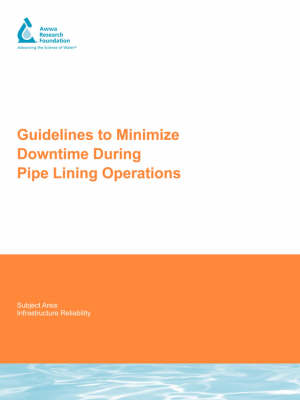When repair and rehabilitation of existing infrastructure is necessary, many utilities employ techniques that reuse the existing conduit to reduce the impact to customers, existing surface facilities, and traffic flow. Pipe renewal operations are generally less expensive and less disruptive than open trench replacement; however, customers must still endure service disruptions and general construction environments. While infrastructure improvements ultimately benefit customers in the long-term, utilities benefit when they reduce short-term customer dissatisfaction. Repair and maintenance of existing distribution lines is an increasing concern for utilities. While pipe lining activities are effective and generally less expensive than complete replacement, they still represent considerable time and expense.
The purpose of this research was to provide guidance on the best practices to minimize the downtime associated with pipe lining operations. In this context, "downtime" refers to the amount of time customers are without water service, must endure restricted service, or are served by less secure networks. Minimizing the amount of downtime and improving temporary service will have a direct impact on customer satisfaction and costs. The data collection from the selected utilities during this project suggested that a number of best management practices have the potential to reduce the length of time necessary for pipe lining operations and consequently, the length of time a temporary pipeline is in service. Each recommended management practice would require a shift or change in what is currently considered a typical construction practice. The construction processes recommended have the potential to significantly reduce the number of days or weeks most customers are subjected to maintenance activities and the temporary pipeline.
- ISBN10 1843398354
- ISBN13 9781843398356
- Publish Date 1 November 2007 (first published 12 September 2007)
- Publish Status Out of Print
- Out of Print 15 June 2021
- Publish Country GB
- Imprint IWA Publishing
- Format Paperback
- Pages 164
- Language English
